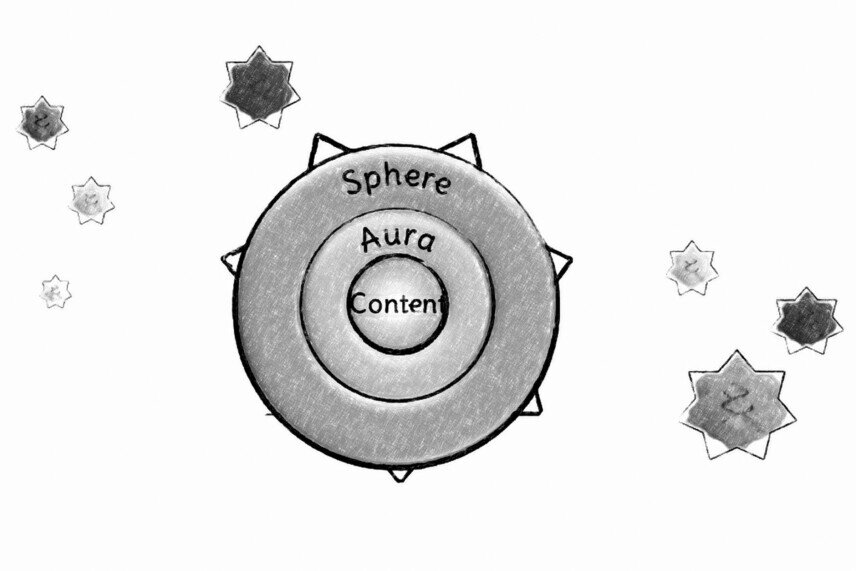Memedefinition
The meme is „any permanent pattern of matter or information produced by an act of human intentionality” (M. Csikszentmihalyi), i.e., all kinds of patterns that humans causally create and think. Like the gene, memes have the characteristics to replicate themselves, vary, select, and spread continuously. Resonance bodies of memes are all information-carrying systems, i.e., above all humans, who have a consciousness that can understand and process information. Also, computers are today able to accomplish exceptional, intelligent processing of data. Beyond that, objects carry information, e.g., as contents (words, pictures, music), form (design style), function (technological conditions), and image (values, attitudes), e.g., in books, documents, DVDs, CDs, records, any pictures, as well as everyday objects.

The actual meaning that is contained in each thought, communication, or object is called a meme. The individual parts of the memes can be designed actively, enables the spreading and the sustainable use of the topic. The elements of the model are content, aura, and sphere. There are types of memes in different states.
- Content
The underlying meaning is contained in the content. Usually, context-related aspects describe it. An example is faith that is differently pronounced in different cultures but always has any transcendental entity.
- Aura
Apparent, content-oriented relations like assumptions, aspects of attractiveness, and cultural dependencies can be found in the aura. Examples are assumptions that suggest facts (e.g., economic successes at the start of a new CEO), attraction (e.g., nice price, easy accessibility), as well as cohesion that result from the cultural context (e.g., club sticker on the car that marks one as a member).
- Sphere
Characteristics of memes that strengthen it can be found in the sphere, e.g., triggers (i.e., aspects that promote the spreading), benefits (i.e., advantages of the usage of memes), attitudes (i.e., values and habits that strengthen the memes) and qualities (characteristics that ensure the sustainability of memes).
There are four different meme types: strategy memes, differentiation memes, association memes, and motivation memes. Each class has specific characteristics and functions. Strategy memes are instructions that point out paradigms and action alternatives, describe processes and rules. Differentiation memes provide categorization, i.e., for characterization, definition, and description. In addition to that identity and culture are expressed, additionally demarcations and prejudices. Association memes describe coherence as mental models, which bring together interpretations, thinking standards, and memories. Motivation memes unsettle positive developments amongst individuals and groups. This is done via activating images, which form new connections (reframes), change attitudes (reimprints), and point out action approaches.
Meme develops across different states from the idea, over a concept, up to implemented practice. A gradual contentual formatting takes place. That way, the original idea “We should change” eventually develops into a new, implemented, and running business model, namely, “We are the most flexible.”

